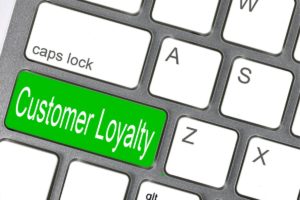 Plainly put, customer loyalty brands in general are broken. US consumers alone hold up to 3.8 billion memberships to loyalty plans, of which 54% are inactive and over a quarter (28%) are abandoned without redeeming points. [1]
Plainly put, customer loyalty brands in general are broken. US consumers alone hold up to 3.8 billion memberships to loyalty plans, of which 54% are inactive and over a quarter (28%) are abandoned without redeeming points. [1]
These are appalling statistics when we consider just how significant the effect of customer loyalty and retention is to a company’s bottom line.
So, how to fix it? Let’s begin with the issues:
Top Issues Around Loyalty
- Consumers have simply no reason to keep shopping with a specific brand unless their products are unique. There is no “why” behind a given company, and so the company can simply be replaced by another one with similar, points-based loyalty programs.
- Loyalty Programs aren’t “sticky” and so consumers are not made to remember a given product, brand or service. The customer drops off the radar and is not prompted in a meaningful way to re-engage the brand.
- Lack of purpose. Are points or rewards alone enough, when we understand the sheer volume of memberships (3.8b in the US alone) and thus noise in the space? Are they meaningful in any way to the consumer?
How can brands cut through this sea of sameness? Purpose may be the answer.
“Value and ease of purchase are still the main drivers of purchase decisions, but sustainability is becoming a bigger factor. A 2019 survey led by Hotwire found that 47% of internet users worldwide had ditched products and services from a brand that violated their personal values. Protecting the environment topped that list.” [2]
Yet notably there is an intention to action gap around sustainable products, often because they’re more expensive or harder to access. Consumers mean well and want to support sustainable brands and products, but impulse can override good intention.
“Consumers say they want more sustainable products, yet they don’t consistently buy them. Why? Because the effort required to buy these products outweighs the perceived benefits. This creates the intention-action gap – a stumbling block for the growth of many sustainable brands.” [3]
Give Consumers What They Want
Consumers want more but are not getting it. The modern consumer expects brands to provide tailored products and services—how they want it, when and where they want it—and they are willing and ready to switch to brands that best serve these demands. But now they’re also demanding the brands share the same values.
As we know, sustainability is a major factor in consumers’ purchase decisions, and brand loyalty that is purpose-driven toward sustainability can uniquely cut through the noise. Loyalty programs that effectively communicate purpose-driven missions beyond the mere collection of redeemable points, that tie into a serious emotional and practical concern consumers have, will be most likely to succeed.
How Soli Solves Customer Loyalty
The insights above are at the heart of Soli’s platform. It’s critical for the consumer to be part of climate remediation and sustainability. Yet to date there haven’t been effective methods for involving them in corporate efforts to fight climate change.
Soli’s purpose is to assist corporations in activating their sustainability efforts at the individual consumer level, enabling everyone to work together to save the planet.
You might think of Soli as a turnkey solution to purpose-driven “why” in terms of consumer loyalty, backed by verifiable carbon credits or compliant offsets. With every purchase, loyal consumers understand they’re involved in something bigger than the mere act of consumption. The importance and potential of this going into 2022 can’t be overstated.
Per Deloitte as of 2021:
“… ethical and sustainability issues remain a key driver for almost a third of consumers, who claim to have stopped purchasing certain brands due to related concerns. As with our previous research, around one in five has opted for low carbon transport or switched to renewable energy. That is double the number who altered their financial investments or contacted a brand to raise a similar issue.” [4]
Consumers are changing their spending habits with sustainability in mind. It’s time we create loyalty programs that go beyond points and rewards and begin to write a narrative with and through these initiatives that speak to consumer’s genuine and serious concerns about the fate of our shared planet.
Companies that take action to do this will see an increase in engagement in their programs, a reduction in abandonment, and stickier loyalty that also allows them to communicate their shared values with customers.
Learn more about Soli and our recent work with AT&T in Austin in this press release.
- https://www.kearney.com.mx/nl/web/pcelabs/article/?/a/customer-loyalty-it-s-about-strategy-not-just-rewards, 2.19.2022 ↑
- https://www.insider.com/guides/style/sustainability-as-a-value-is-changing-how-consumers-shop, 2.19.2022 ↑
- https://www.greenbiz.com/article/how-close-consumers-intention-action-gap#:~:text=Consumers%20say%20they%20want%20more,growth%20of%20many%20sustainable%20brands, 2.19.2022 ↑
- https://www2.deloitte.com/uk/en/pages/consumer-business/articles/sustainable-consumer.html, 2.19.2022 ↑
